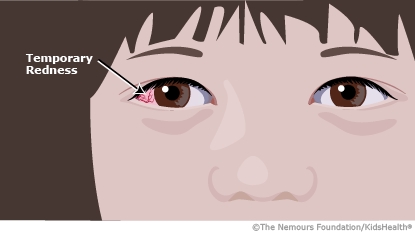Strabismus is when the eyes don't line up and look in the same direction (sometimes called a "wandering eye"). Your child had surgery to help correct their strabismus (streh-BIZ-mis). Your child should be back to their regular activities within a few days, but their eye may stay red for a few weeks. Use these instructions to care for your child at home.

- Use the eye drops or ointment as prescribed by the surgeon. Always wash your hands before and after using the eye drops or ointment. If you are unsure how to use the medicines, ask your surgeon for specific directions.
- Your child can eat as usual, but it may take some time for their appetite to fully return.
- Your child can go back to school and other activities when ready. For 2 weeks after surgery, though, they shouldn't play any sports where the eye could get hit (check with your surgeon about when it's OK to play again), swim, or get the eye dirty.
- Your child can bathe as usual, but should be careful not to get water or soap into the eye for 1 week after surgery.
- There may be some blood-tinged tears, mucus, or crusting from your child's eyes for the first few days after surgery. If needed, use a clean washcloth dampened with plain water to gently wash the eyelashes and area around the eye.
- Have your child wash their hands often and not touch their face or eyes.
- Help your child avoid rubbing the eye.
To help your child feel more comfortable, you can:
- Wrap a cold pack or ice in a clean, thin towel and place it over your child's eye for about 10–15 minutes a few times a day.
- Have your child wear a hat and sunglasses when outside because their eye may be sensitive to sunlight.
- If the surgeon says it's OK, you can give your child medicine for pain, such as acetaminophen (Tylenol® or a store brand) or ibuprofen (Advil®, Motrin®, or a store brand). Don't give ibuprofen to babies under 6 months old. Follow the package directions for how much to give and how often.

Your child has worsening eye redness, eye pain, fever, thick yellow discharge from the eye, or changes in vision.

Why is it important to treat strabismus? If the eyes don't line up, each eye sends a different view to the brain. The brain handles this by ignoring the view coming from one eye. Over time, the ignored eye gets weaker and doesn't see as well (called amblyopia). If strabismus is treated early (typically, before a child is 8 years old), the vision in the weak eye usually can get better. If it's treated too late, the vision changes can be permanent.




